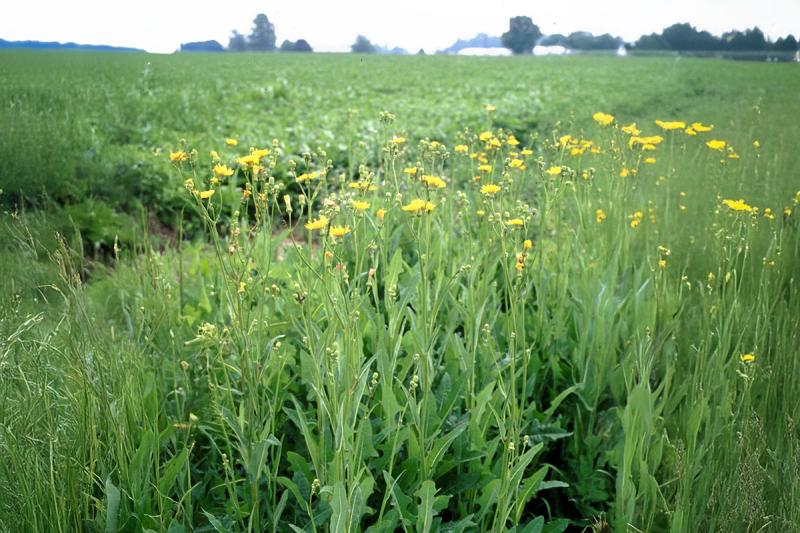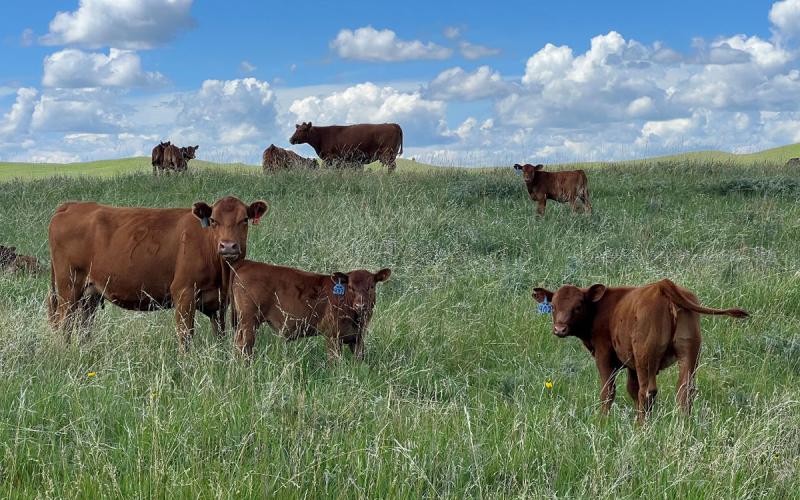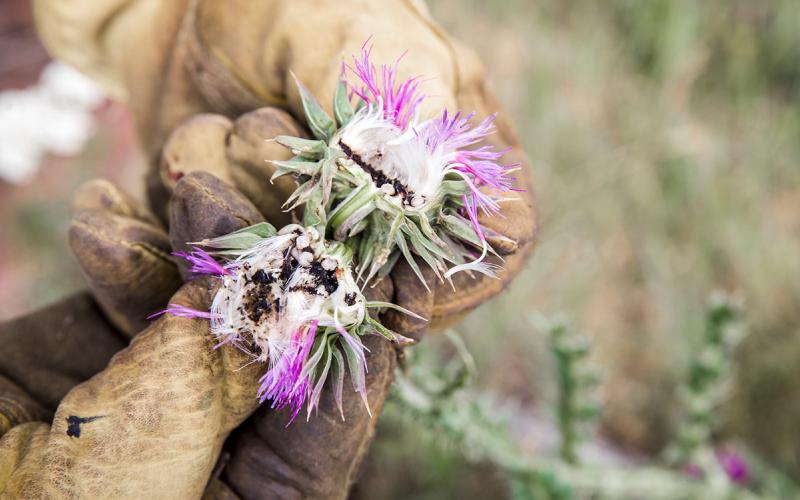Written collaboratively by Eric Jones, Philip Rozeboom, Graig Reicks, Jill Alms, and David Vos.
Perennial sowthistle is a statewide noxious weed in South Dakota. The South Dakota Department of Agriculture and Natural Resources estimates that perennial sowthistle inhabits approximately 118,000 acres across the state. A recent survey of noxious weed management indicated that despite the relatively low number of acres infested, South Dakota stakeholders still find difficulty in managing the weed. Plants in the vegetative stage have a similar appearance to thistle species, but in the flowering stage, the plant resembles a large dandelion (Figure 1). Another identifying feature is when the stems/leaves are removed from the plant, a white-milky sap is excreted.

Perennial sowthistle inhabits roadsides, pastures, rangelands, and croplands. Perennial sowthistle can be abundant in overgrazed, over-hayed, or over-mowed areas as there is little desirable vegetation to compete against the weed. Similar to the thistle species, seeds of perennial sowthistle can be moved over great distances by the wind. Plants can also spread by rhizomes (underground roots) throughout an area. If not managed, this weed can spread across the landscape to reduce crop production, displace desirable vegetation, and reduce land value.
Management Options
Biological
There are no known insects that feed on perennial sowthistle. Since young plants are palatable to livestock, grazing can help reduce the spread.
Cultural
Perennial sowthistle seeds can easily establish in overgrazed or disturbed areas that contain little desirable vegetation. Planting competitive vegetation can inflict competition on germinating weeds. Rotational grazing can help increase the presence of desirable vegetation that can be competitive against germinating perennial sowthistle and other weeds.
Chemical
Herbicides applied in the spring must be before the plant begins to produce flower buds. Fall herbicide applications should be made before a killing frost. Since perennial sowthistle is related to Canada thistle and other biennial thistles, common pasture and rangeland herbicides are effective, which include products containing 2,4-D (many products), aminopyralid (Milestone), dicamba (many products), and picloram (Tordon). Dissimilar to Canada thistle and biennial thistles, clopyralid (Stinger, Transline) will not be effective on perennial sowthistle. A mixture of effective herbicides usually results in increased management compared to applying just one herbicide. Spring and fall herbicides applications may be needed. Refer to SDSU Extension’s latest Weed Control: Noxious Weeds publication for more information on effective herbicides. Also refer to the specific herbicide labels before spraying.
Mechanical
Plants that have begun to produce flower buds (too late for herbicides to be effective) can be mowed to reduce seed production. Plants that are mowed in the spring will likely regrow later in the season. The regrowth can be treated with an herbicide or mowed again. Plants that have already produced mature seeds should not be mowed because the disturbance can facilitate seed movement across the landscape. Tillage can bury seeds on the soil surface to depths where the seeds cannot germinate. Tillage can also break apart rhizomes and bury the fragments within the soil. However, tillage can also break apart rhizomes to create new growing points that will increase the spread of the weed. Hand weeding small, isolated patches is also a viable tactic to reduce seed production but follow-up tactics will likely be needed.
In Summary
Implementation of various biological, cultural, chemical, and mechanical tactics will likely increase the effectiveness of a weed management plan. Integrating these tactics should be done on a site-by-site basis to ensure the appropriate tactics are selected for the presented infestation, topography, and surrounding vegetation.

